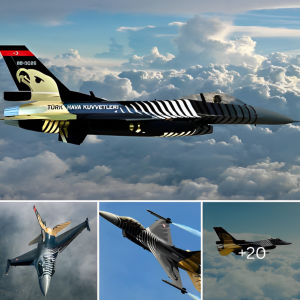The F-15EX Eagle II Soaring High After Weapons System Evaluation – Earlier this month, the United States Air Force Operational Test and Evaluation Center Detachment 6 team members participated in two of the first developmental and operational test missile shots from the Boeing F-15EX. For the exercise, Engineers and analysts from the AFOTEC Detachment 6 F-15 division traveled to Eglin Air Force Base (AFB) and Tyndall AFB, both in Florida, to draw results from the AIM-120D and AIM-120C3 missile shots performed as part of the Weapons System Evaluation Program (WSEP) conducted by Eglin’s 53rd Wing.
These missile shots highlighted how the F-15EX can be employed in theater and provided the context needed for Detachment 6 to verify its combat capability.
“One of the main takeaways from these live fire shots is that the jet can clearly function as a long-range, standoff weapons system,” explained Capt. Max Denbin, the team’s lead test engineer. “The F-15EX can shoot from a significantly increased range – farther than any other fighter in the U.S. Air Force arsenal – and provides the unique capability of holding 12 AMRAAMs or other large ordinance.”
The Air Force has said that the long-range, standoff capability is a fundamental pillar of ensuring U.S. power projection on a global scale.
“As adversaries continue to develop combat capability, the weapons systems with standoff capability, like the EX, are going to be critical in maintaining a tactical advantage,” Denbin continued.
Detachment 6 analysts and engineers focused on more than just data collection from the recent WSEP, and in recent months, they have explored exactly how the F-15EX performs as part of a force package with fifth-generation fighters.
“Analyzing data elements is always important,” added 1st Lt. Hagan Strader, lead analyst at Detachment 6. “As an operational test organization, we’re focused on communicating exactly what pilots can expect from the EX when it’s time to fight. Even at the unclassified level, the new capabilities that the F-15EX offers push it squarely into the future of combat. This is a platform that can work with penetrating assets in a network-enabled battlespace with the potential to cause significant problems for our adversaries.”
Building on the Eagle’s Greatest Hits: Expert Analysis of the F-15EX
The Boeing F-15EX is a two-seat all-weather, multirole fighter that offers enhanced capabilities that are completely unique to the U.S. Air Force. It is a greatly enhanced upgraded aircraft based on the McDonnell Douglas F-15 Eagle, which first entered service back in 1976, just months before the United States bicentennial celebrations. The twin-engine, all-weather tactical F-15 has had one of the most successful track records of modern fighters, with more than 100 victories and no losses in aerial combat. The aircraft’s design also proved flexible enough that an improved all-weather strike derivative, the F-15E Strike Eagle, was later developed and entered service in 1989.
The F-15EX is essentially a 21st-century evolution of the proven fighter. It features fly-by-wire flight controls, new weapons stations, a new electronic warfare suite, advanced radar and computer, conformal fuel tanks, and a strengthened airframe. The improved F-15EX is further equipped with a deep magazine that will allow it to carry a number of advanced weapons – yet with a 28 percent larger payload than the F-15E. At the same time, the fighter will also require only minimal transitional training and little additional manpower from the older versions of the F-15.
F-15EX An Evolutionary Aircraft
Externally the aircraft may resemble the original F-15, but as noted, Boeing had improved the fighter for sales to international partners, including South Korea and more recently Kuwait, and in the process determined that it could be the right fighter for the U.S. Air Force – an affordable fourth-generation plus plus (4th generation++) fighter to compliment its fifth-generation fleet of Lockheed Martin F-35 Lightning IIs.
According to the Air Force, the EX has also required little to no infrastructure changes.
The Air Force has estimated that the F-15EX fighter shares about 70 percent of parts with the current F-15Cs and F-15Es that it will be replacing. In addition, the original production lines in St. Louis remain in place, while the aircraft’s training facilities, maintenance depots, and other infrastructure are available to be shifted to F-15EX support.
Boeing has touted the Eagle II as a fighter that will be easier to build and quicker to put into service, while it will also result in a platform that can be maintained more cost-effective than an equal number of F-35s. In addition, the F-15EX can enable rapid technology insertion that will ensure the platform’s relevance for decades to come. This will be accomplished via an Open Mission Systems Architecture, which can deliver Advanced Battle Management Systems (ABMS) capabilities, allowing the F-15EX to operate independently while isolated but also to reconnect to the global cloud.
The F-15EX made its inaugural flight on Feb. 2, 2021, and last year delivered two of the aircraft to Eglin Air Force Base (AFB) for testing.





